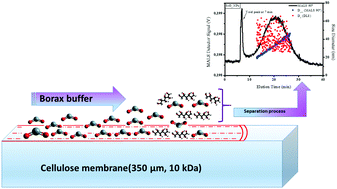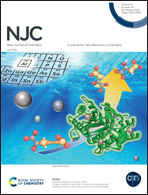Multivariate optimization of field-flow fractionation of nanoscale synthetic amorphous silica in processed foods supported by computational modelling
Abstract
Synthetic amorphous silica (SiO2) is a highly attractive biomaterial that has been widely used in the food industry to improve the flow properties of powdered ingredients. However, the interactions of food-grade nanoparticulate additives with biomolecules are not fully understood. In this work, a multivariate method was developed for the detection and characterization of SiO2 particles based on Asymmetric Flow Field-Flow Fractionation (AF4) coupled online to Multi-Angle Light Scattering (MALS) and Dynamic Light Scattering (DLS) detectors. This analytical approach attempts to address the fate and presence of SiO2 nanoparticulate (NP) additives (E551) in food products. The experimental design using SiO2-NP standards resulted in the following optimum conditions of the system: crossflow, 0.8 ml min−1; injection time, 5 min; and sonication time, 60 min. The average geometric diameters (Dgeo) for SiO2-NPs in the three selected coffee creamers detected by AF4-MALS were 286.7 nm, 129.8 nm and 190.7 nm, and the hydrodynamic diameters (Dh) detected by AF4-DLS were 301.5 nm, 141.3 nm and 197.8 nm respectively. The calculated shape factor (rg/rh) values ranged from 0.7 to 0.8, indicative of the spherical particle geometry. In addition, the electrostatic interaction between SiO2-NPs and glucose/water mixtures by Monte Carlo simulations revealed the O-interactions dominating over the flat amorphous SiO2 surface. The strongest interaction observed (around −239 kcal mol−1) for the SiO2–water/glucose mixture demonstrates the hydrophilic nature of SiO2-NPs. These findings provide fundamental information to improve the understanding of nanoparticulate interactions of food additives and pave the way for nano-labelling of nanomaterials in complex matrices.



 Please wait while we load your content...
Please wait while we load your content...